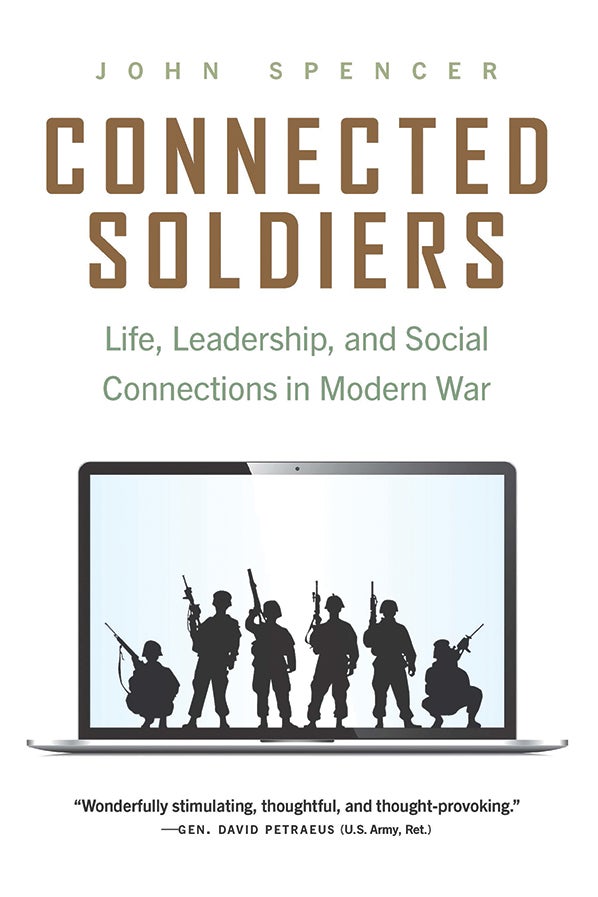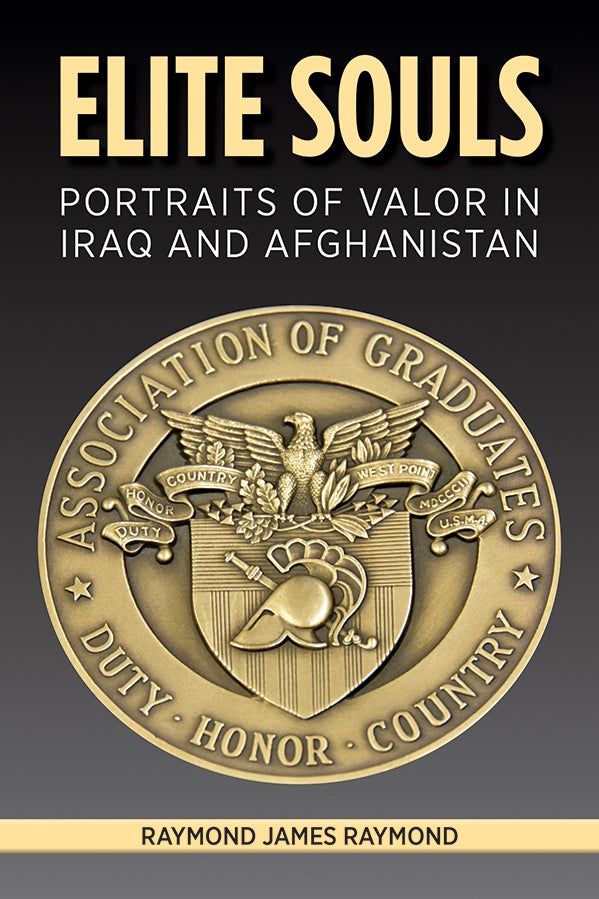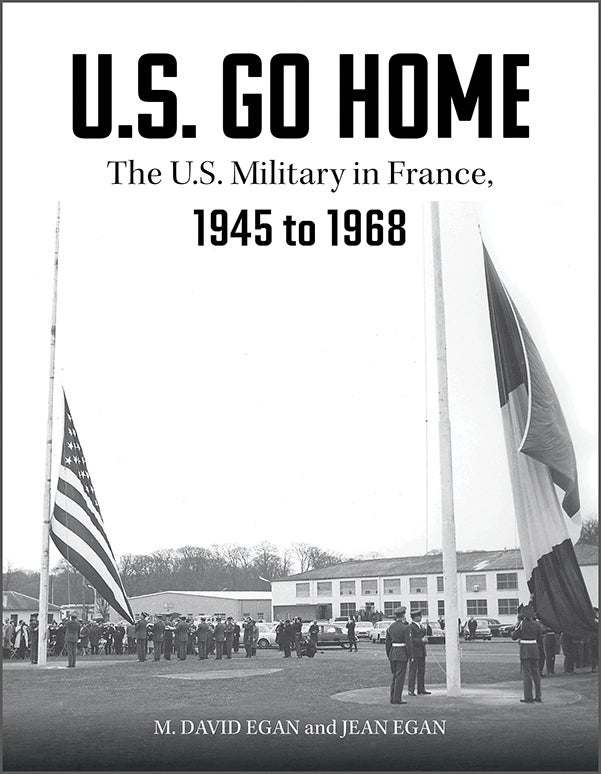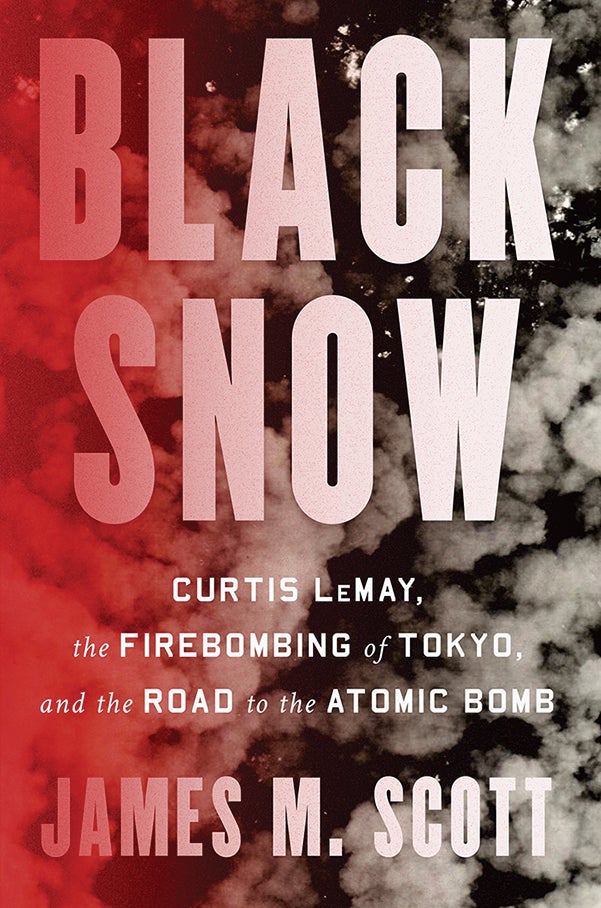November 2022 Book Reviews
November 2022 Book Reviews
Technology Alters Warfare, Army Culture

Connected Soldiers: Life, Leadership, and Social Connections in Modern War. John Spencer. Potomac Books. 280 pages. $24.95
By Lt. Col. Joe Byerly
Over the past two decades, the technological landscape of society has changed. Cellphones became smartphones. Social media applications scaled from the purview of college kids wanting to meet each other to 4.62 billion people around the world with social media accounts.
While technology advanced, soldiers in the U.S. Army found themselves deploying and redeploying to Iraq and Afghanistan. With each deployment, these technological advances influenced how they fought, spent their free time, connected with each other and connected with their communities back home.
In Connected Soldiers: Life, Leadership, and Social Connections in Modern War, Army veteran John Spencer explores how groups form bonds, how technology can alter unit cohesion and how warfare has been shaped by social media. He tackles these weighty topics through the lens of his own experiences.
First, he shares his experiences on his first deployment to Iraq in 2003, describing how his platoon bonded through shared hardship and lack of connection with their families due to lack of military infrastructure and available technology. Next, he shares how connectivity back home changed during his second deployment. He recounts experiences as a company commander during the Surge, observing that soldiers were quick to jump on Facebook after a patrol instead of processing the events among themselves. He felt that the obstacles to unit cohesion were much higher during this deployment due to the availability of internet and social media to members of his company.
In the final section of the book, Spencer experiences a deployment on the other side of retirement. His wife deploys, while he stays at home to raise their kids. He shares how technology allowed his wife to FaceTime daily with their children and the mental toll the family separation took on everyone, with her emotionally being in two places at once.
The strength of this book is found in the stories Spencer shares about his experiences and his observations on connectivity and cohesion. Veterans of Iraq and Afghanistan will find his experiences relatable and a catalyst for reflecting on their own deployments. Spencer’s observations on social media and unit cohesion reflect problems that many commanders face today in building effective teams.
This book is a quick read, and I recommend it to modern veterans looking to reflect on their experiences and to the next generation of Army leaders who want a snapshot of deployment experiences. It also will be of interest to those wanting to research and study the effects of technology and social media on unit cohesion.
Lt. Col. Joe Byerly is an armor officer who recently served as a special adviser with the U.S. Special Operations Command. He is a Non-Resident Fellow with the Modern War Institute, U.S. Military Academy, West Point, New York, and is the founder of the website From the Green Notebook.
* * *
West Point Grads Display Great Bravery

Elite Souls: Portraits of Valor in Iraq and Afghanistan. Raymond James Raymond. Naval Institute Press (An AUSA Title). 384 pages. $49.95
By Col. Kevin Farrell, U.S. Army retired
West Point graduates have played a critical role in every American conflict since the Second Seminole War of 1835–42. Although it is a vast understatement to observe that warfare has changed substantially since the early 19th century, one thing that has remained constant regarding the American way of war is the inspired leadership and bravery demonstrated by graduates of the U.S. Military Academy at West Point, New York.
Elite Souls: Portraits of Valor in Iraq and Afghanistan is an in-depth look at five of those graduates who demonstrated great heroism in America’s two most significant recent overseas conflicts.
Raymond James Raymond, a former British diplomat and currently an adjunct professor in the Department of Social Sciences at West Point, has written what amounts to five extended biographies of what he terms “Elite Souls.” The author attributes the book’s title to the 19th century French military theorist Ardant du Picq, who reportedly argued that selfless courage is rooted in “moral culture” and is demonstrated by “the elite souls.” Raymond’s central argument is that each of the elite souls he examines embodies “a marriage of outstanding ability with exceptional moral character.”
All those profiled received the Alexander R. Nininger Award, an annual award bestowed by West Point’s Association of Graduates in recognition of a graduate’s exceptional courage and heroic action in battle. The name of the award originates from the heroism of 2nd Lt. Alexander Nininger, West Point Class of 1941, who was killed in action fighting the Japanese on Bataan in 1942 and posthumously received the first Medal of Honor in World War II.
The five individuals profiled in Elite Souls are Nininger Award recipients for five consecutive years, from 2009 to 2013. Interestingly, two of them—Nick Eslinger and Stephen Tangen—led the same infantry platoon, and this fact lends a nice symmetry to the work overall. In addition to Eslinger and Tangen, one other, Ross Pixler, is an infantry officer, while the other two, Tony Fuscellaro and Bobby Sickler, are aviation officers. Three performed heroically in combat in Iraq and two in Afghanistan.
Integrating the family background and life experiences of his subjects against the backdrop of the West Point experience, Raymond highlights Army training and specialty schools—in particular the arduous U.S. Army Ranger School at Fort Benning, Georgia, and the exacting requirements of flight school at Fort Rucker, Alabama—and life in the Army as a junior officer.
In getting to know these five West Point graduates and genuine heroes, the reader of Elite Souls also gains a better understanding of the post-9/11 Army. In addition to those profiled in Elite Souls, Raymond introduces outstanding role models (and occasionally poor leaders) who exerted a profound influence on mentoring and developing them. Along the way, he provides a gripping account of combat in the modern era.
While not all West Point graduates are likely to agree with the author’s positive assessment of the significant reforms undertaken at the academy in recent decades, all likely will be inspired by the exceptional heroism and leadership of the five men profiled.
Elite Souls is appropriate for anyone with an interest in West Point and especially what combat was like at the tactical level during America’s recent endeavors in Iraq and Afghanistan.
Col. Kevin Farrell, U.S. Army retired, is the former chief of military history at the U.S. Military Academy, West Point, New York. He commanded a combined arms battalion in Iraq. He holds a doctorate in history from Columbia University, New York. His most recent book is The Military and the Monarchy: The Case and Career of the Duke of Cambridge in an Age of Reform.
* * *
American Forces Evicted From France

U.S. Go Home: The U.S. Military in France, 1945 to 1968. M. David Egan and Jean Egan. Schiffer Military. 616 pages. $49.99
By Col. Cole Kingseed, U.S. Army retired
Between the formation of NATO in 1949 and 1968, the U.S. military built infrastructure across France to provide logistical support to the U.S. Seventh Army stationed in West Germany to deter Soviet aggression. At the request of French President Charles de Gaulle in March 1966, all American service members were reassigned outside of French national borders within two years. U.S. Go Home: The U.S. Military in France, 1945 to 1968 is the story of this little-known chapter in American history.
Co-authors and spouses M. David Egan commanded an ordnance company in France in the early 1960s and went on to a career in architecture, and Jean Egan is an independent scholar and editor. Together, they researched 50 international archives and conducted more than 400 interviews in compiling this monumental study of the American presence in France during the opening decades of the Cold War.
Superb graphics by illustrator Charles Tilley greatly enhance U.S. Go Home. So do tables that address the significant events and humanitarian operations of the U.S. Army and Air Force, and the prominent achievements of each Supreme Allied Commander, Europe, from Gen. Dwight Eisenhower in December 1950–April 1952 through Gen. Andrew Goodpaster, from July 1969 to November 1974.
Two chapters from U.S. Go Home are most revealing. In “US Military Forces Return,” the Egans trace the construction of installations and facilities that would be available to the U.S. Army as France became the operational headquarters and logistical hub for the defense of the Western alliance. At its peak strength in 1962, there were 100,000 American personnel and dependents residing in France, and the U.S. Army and U.S. Air Force employed nearly 22,000 French civilians.
U.S. Go Home’s final chapter, “Fast Withdrawal from France,” outlines the political controversy that led to de Gaulle’s request for invoking the “doctrine of changed conditions” in which he demanded transfer from France of Supreme Headquarters Allied Powers Europe headquarters and all allied units, installations and bases not under the control of the French government. By 1968, more than 400 U.S. military facilities were closed and transferred to French authorities.
The administration of President Lyndon Johnson seemed surprised by de Gaulle’s demand, but the French president operated in what he deemed France’s vital national interest. De Gaulle became increasingly uncomfortable that French forces would be commanded in wartime by an American general.
Additionally, he believed the American policy of “flexible response” would exempt the U.S. from nuclear attack, while leaving France and Europe to serve as the nuclear battlefield. Further, de Gaulle believed strongly that the American military buildup in Southeast Asia would cause the U.S. to reduce its defense commitments to Europe.
Regardless of de Gaulle’s motivation, the American military presence in France through 1968 must be judged highly successful. The U.S. Army’s presence acted as a deterrent to Soviet aggression, and soldiers responded to crises ranging from the civil war in Lebanon, to the construction of the Berlin Wall, to the initial buildup of forces in Vietnam. The U.S. military in France also provided aid when natural disasters occurred in Europe, Africa and the Middle East.
This book is well worth reading, both for its institutional history of the formation of NATO and as a guide for today’s military officers.
In illuminating the U.S. Army’s role on the international stage, U.S. Go Home makes an invaluable contribution to comprehending the most effective manner in which American armed forces conduct operations to maintain deterrence.
Col. Cole Kingseed, U.S. Army retired, a former professor of history at the U.S. Military Academy, West Point, New York, is a writer and consultant. He holds a doctorate in history from Ohio State University.
* * *
Japan Shattered Before Atomic Bomb

Black Snow: Curtis LeMay, the Firebombing of Tokyo, and the Road to the Atomic Bomb. James Scott. W.W. Norton. 432 pages. $35
By Brig. Gen. John Brown, U.S. Army retired
The morality of dropping an atomic bomb on Hiroshima, Japan, on Aug. 6, 1945, is a recurrent topic of historical debate. Too often, discussion progresses without an understanding of the approach march to that seminal event.
In Black Snow: Curtis LeMay, the Firebombing of Tokyo, and the Road to the Atomic Bomb, James Scott—author of Rampage: MacArthur, Yamashita, and the Battle of Manila; Target Tokyo: Jimmy Doolittle and the Raid That Avenged Pearl Harbor; and other well-regarded works on World War II in the Pacific—offers an opportunity to redress that defect.
Scott begins with the Nov. 24, 1944, strike on the Nakajima Aircraft Co. factory in Musashino, a suburb of Tokyo. This first U.S. Army Air Forces attack on Japan from the newly captured Marianas Islands was to showcase the power and elegant precision of the recently fielded B-29 Superfortress bomber.
In several more chapters, Scott backtracks to describe the evolution of strategic bombing in concept and practice, bitter debates between advocates of “precision” and “area” bombing, and the unprecedented investment and risk the leap-ahead technologies of the B-29 represented.
Unfortunately for its advocates, precision bombing didn’t work well against Japan. Weather, enemy countermeasures and the high altitudes necessary in daylight to minimize casualties left B-29s plinking their targets without decisive effects.
Also, the cherished notion of an eventually independent U.S. Air Force was on the line. The bloody grind of fighting in the Pacific had hardened attitudes, as had news of Japanese atrocities in the Philippines, China and elsewhere. Americans wanted a quick end to their mounting losses and sought decisive results. Brig. Gen. Haywood Hansell Jr., a thoughtful advocate of precision bombing, was replaced atop the XXI Bomber Command by the harder-nosed Maj. Gen. Curtis LeMay.
Scott describes LeMay’s ascent to authority, combat experience and tough leadership style. LeMay bucked up XXI Bomber Command without at first giving up on precision bombing. However, as a pragmatist, he was determined to do whatever worked and was familiar with low-level nighttime incendiary attacks, aka firebombing. Japan’s wooden housing and infrastructure, along with a widely dispersed cottage industry for war production, made the country particularly susceptible to such attack.
Scott describes the design and execution of the March 9–10, 1945, firebombing of Tokyo in vivid detail. Surprise, mass, careful choreography and low-altitude assault whipped up firestorms that devastated central Tokyo and killed 100,000 people—perhaps the most destructive single bombing raid in history. More such raids followed, devastating urban Japan.
Scott captures the Japanese side of the story, weaving their horrific experiences on the ground through the narrative of events in the air and operational considerations. Numerous voices enrich his account, including those who exulted in, were appalled by or suffered from the ubiquitous destruction.
By August 1945, the damage was near-universal. Japan’s cities were in ruins, its industries defunct, its merchant marine sunk and its armies defeated everywhere. Yet Japan fought on, raising the grim prospect that only a ground assault and bloody Okinawa-like fighting would end the war.
Allied planners thought the shock of the atomic bomb would bring to the Japanese the belated recognition that there was no hope left. In this they proved correct. Emperor Hirohito’s Aug. 15, 1945, address to the Japanese people announcing capitulation lasted four minutes and 36 seconds, and pivoted on the “new and most cruel bomb.” The atomic bomb’s dramatic novelty offered a face-saving way to acknowledge a defeat that had already occurred by more conventional means. LeMay expressed surprise that the war went on as long as it did, as he had run out of cities to bomb.
Black Snow is fine history and gripping narrative. I recommend it to all interested in World War II, military history, military innovation and the ethics of war.
Brig. Gen. John Brown, U.S. Army retired, served 33 years in the Army, with his last assignment as chief of military history at the U.S. Army Center of Military History. The author of Kevlar Legions: The Transformation of the United States Army, 1989–2005, he has a doctorate in h

